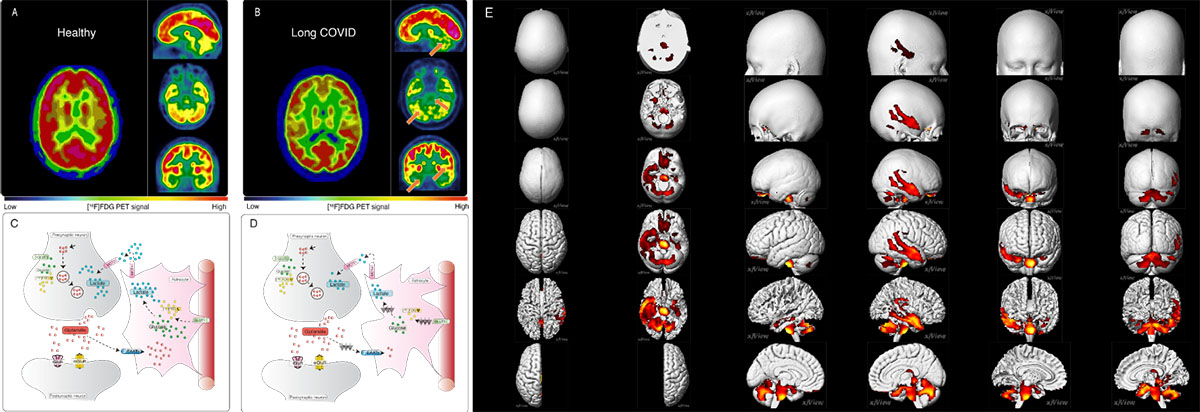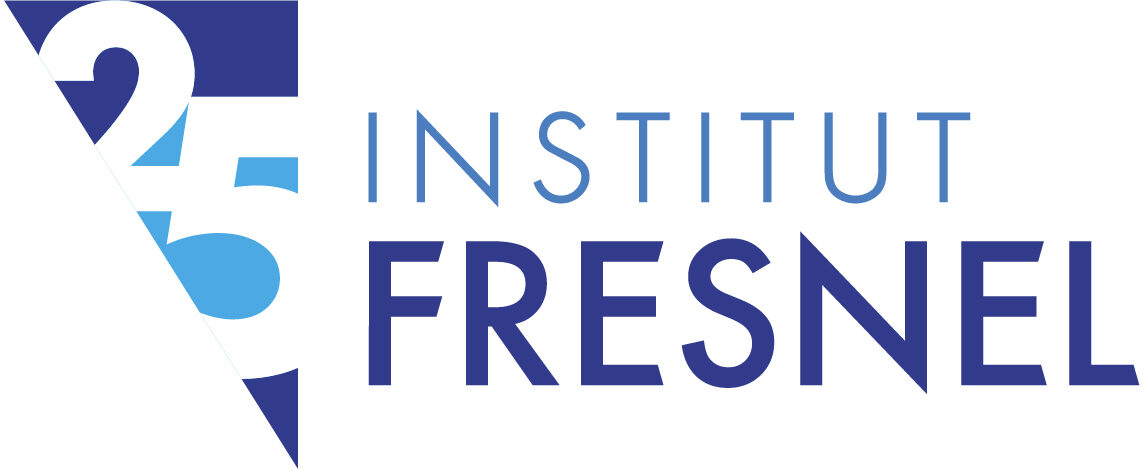
The neuroimaging research conducted by the IMoTheP team on understanding Long COVID has been doubly recognized by AuntMinnie, the leading international media outlet for medical imaging, as among the best scientific articles and images of the year 2024.
Two million people suffer from Long COVID in France. These post-acute sequelae primarily affect young and active individuals, with potential progression to chronic conditions, disability, and stigmatization. The medical and economic impact is estimated at 1% of the global economy.
Molecular neuroimaging research conducted by the IMoTheP team using Positron Emission Tomography (PET) has identified a hypometabolic network linked to olfactory entry pathways. This pattern, observed in both adult and pediatric patients, differs from that of psychiatric disorders or physical deconditioning due to lockdowns. Its severity correlates with the intensity of symptoms, with only partial recovery observed over a 9-month follow-up. This research also highlights a correlation between this late-stage hypometabolism and an initial inflammatory hypermetabolism in the same regions. It could represent an astrocytic signature of glutamatergic dysregulation associated with neuroinflammatory microglial activation.
These studies have significantly contributed to better recognition the cerebral reality of Long COVID (the seminal article has been the most cited in the European Journal of Nuclear Medicine and Molecular Imaging since 2021) and to the development of PET imaging interpretation criteria incorporated into European Nuclear Medicine guidelines.
Figure: Neuro-metabolic signature of COVID long in brain PET with 18F[FDG] (adapted from 10.1007/s00259-021-05215-4 and 10.1007/s00259-021-05215-4)

Partners : Aix-Marseille Université, AP-HM, CNRS, Ecole Centrale Méditerranée, Université de Poitiers, INSERM, Pontifícia Universidade Católica do Rio Grande do Sul (PUCRS), McGill University – Montréal
References :
Horowitz T, Pellerin L, Zimmer ER, Guedj E. Brain fog in long COVID: A glutamatergic hypothesis with astrocyte dysfunction accounting for brain PET glucose hypometabolism. Med Hypotheses. 2023;180:111186. doi:10.1016/j.mehy.2023.111186
Guedj E, Campion JY, Dudouet P, et al. F-FDG brain PET hypometabolism in patients with long COVID. Eur J Nucl Med Mol Imaging. 2021;48(9):2823-2833. doi:10.1007/s00259-021-05215-4
Other articles :  https://www.auntminnie.com/clinical-news/article/15704797/meet-the-minnies-2024-semifinal-candidates
https://www.auntminnie.com/clinical-news/article/15704797/meet-the-minnies-2024-semifinal-candidates
https://www.auntminnie.com/clinical-news/molecular-imaging/article/15636821/researchers-offer-hypothesis-for-long-covid-brain-fog
Contact : Prof. Eric GUEDJ, IMOTHEP team – eric.guedj@univ-amu.fr

